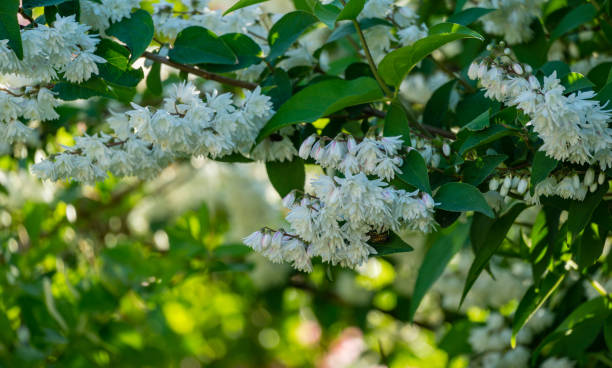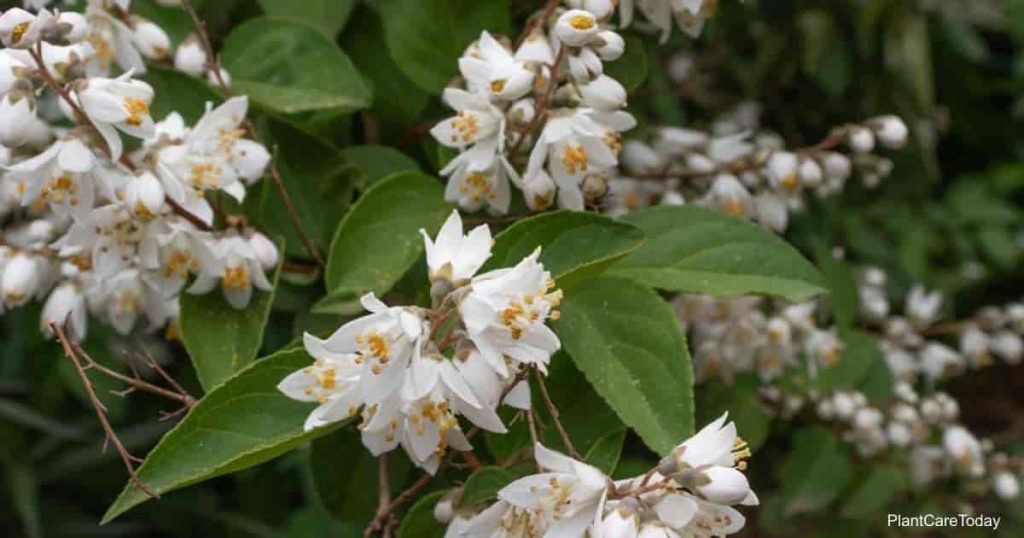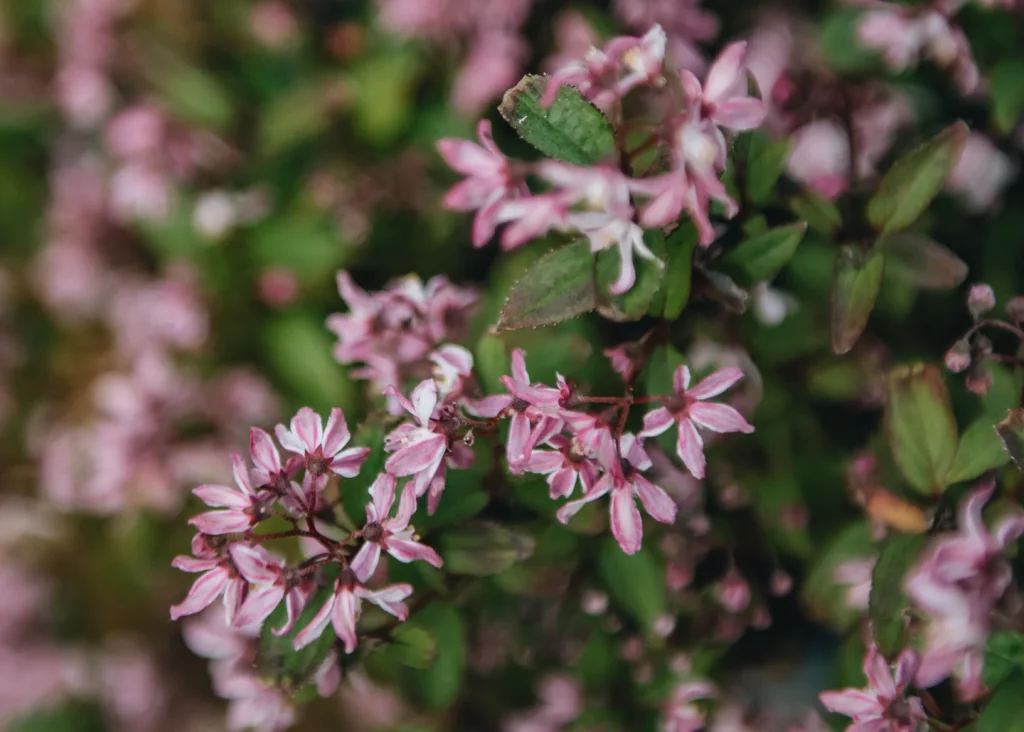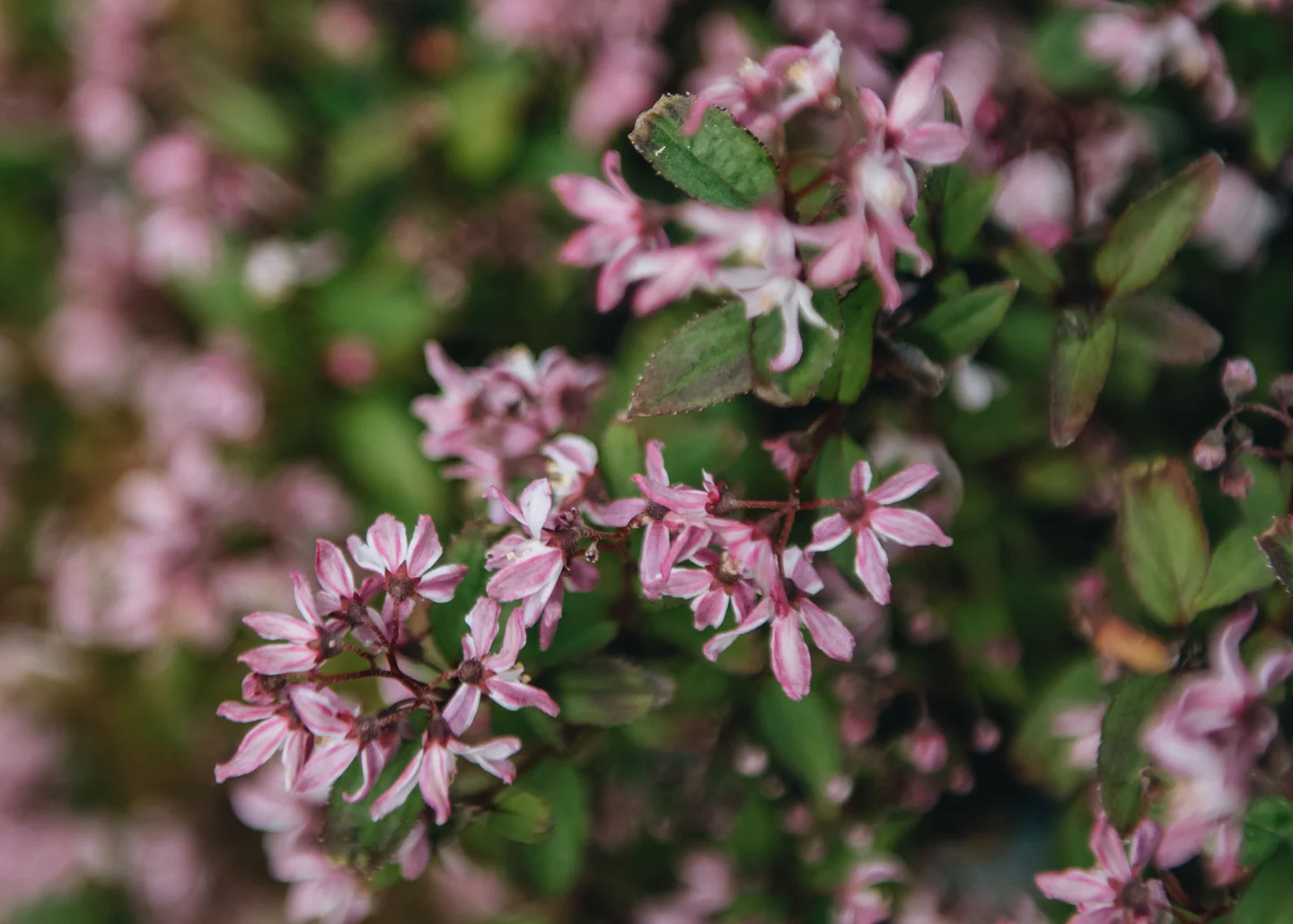Deutzia, a genus of flowering plants belonging to the hydrangea botanical family, encompasses a collection of 60 captivating plant species. These plants display clusters of exquisite flowers, reminiscent of the hydrangea’s blooming style.
When it comes to selecting a garden plant in areas dominated by large trees, Deutzia shrubs prove to be an excellent choice. While we cherish the presence of trees, finding shade-tolerant flowering plants can be quite a challenge. However, Deutzia defies the odds and thrives abundantly in shaded areas, offering a flourishing blooming season.
Our extensive list of Beautiful Flowering Plants from across the globe features the Deutzia plant as one among many captivating species. Ranging from succulents to ornamental grasses, shrubs, and more, we cover a wide array of botanical wonders.
Clusters of light pink, five-petaled flowers adorn the Deutzia shrub, growing in tight bunches along stalks. Another delightful sight is the two-toned pink flowers of the Deutzia shrub, flourishing in clusters.
Let’s explore the distinct characteristics of Deutzia shrubs, beginning with their flowers.
Flowers
The Deutzia shrub boasts stunning racemes as its flowers. These flower clusters bear a striking resemblance to hydrangea blooms.
The shapes of Deutzia flowers vary, some elongated, others gently drooping, and a few bell-shaped. Certain species exhibit panicles of corymbs, resulting in a profusion of blooms.
During early spring or mid-summer, flowers grace the shrub for a brief two-week period. Typically, they emerge as elegant pink blossoms, but occasionally, they may be white or red.
Once pollinated, the flowers transform into small dry capsules, encapsulating numerous tiny seeds. These capsules eventually dry up, releasing the seeds, which are dispersed by wind or through animal droppings.
Leaves
Depending on their growing region, Deutzia shrubs can be deciduous or evergreen. In warmer climates, they retain their leaves, while in colder regions, they shed them.
Deutzia leaves feature a simple shape with a serrated margin. Arranged oppositely along the stem, these light green leaves may display a captivating fall color in autumn for certain species.
Growth Pattern
Deutzia shrubs exhibit varying sizes, typically ranging from 1 to 4 meters in height. These multi-stemmed deciduous shrubs may stand erect or possess a ground-covering, mounded habit.
Branches gracefully arch, imparting a cascading or weeping appearance to the shrub. In winter, the bark peels away, revealing a beautiful orange hue, adding ornamental value even during the colder months.
Now, let’s explore some common Deutzia species.
Fuzzy Deutzia (Deutzia Scabra)

One of the oldest cultivated varieties, the fuzzy Deutzia, has graced Japanese ornamental gardens for centuries.
This flowering shrub can reach a height of up to 3 meters and produces clusters of small white flowers resembling cotton balls, which led to its name, fuzzy Deutzia.
This ornamental species thrives in shaded environments and blooms profusely, even in full shade conditions.
Slender Deutzia (Deutzia Gracilis)

The slender Deutzia holds the title of the most popular Deutzia species for ornamental planting. It showcases delicate white flowers that bloom in late spring.
Usually growing to about 1 meter in height, the Deutzia gracilis ‘nikko’ cultivar has been specially cultivated to half that size. This variety’s arching branches touch the ground and take root, giving rise to new plants.
This adaptable species tolerates various levels of sun exposure and soil types, making it a resilient and easy-to-propagate plant.
Yuki Cherry Blossom (Deutzia x Yuki Cherry Blossom)

The Yuki Cherry Blossom is a recently developed Deutzia cultivar and the first to bear pink flowers, which has sparked excitement among gardeners worldwide.
This variety produces bell-shaped pink flowers that bloom in early spring. It thrives in shaded areas and naturally repels deer.
With its colorful carpet of flowers and attractive mounded growth habit, it is often used for mass plantings and as a ground cover.
Deutzia plants are native to eastern and central Asia, as well as parts of central America and Europe. Flourishing primarily from the Himalayas to Japan and the Philippines, they exhibit tolerance to both cold and heat. In colder regions, they shed their leaves as deciduous shrubs and bloom anew after winter. In milder climates, such as certain European countries, they tend to flower early, though unexpected frost can disrupt their bloom.
To successfully cultivate a Deutzia shrub, one must consider its growing conditions, which are relatively simple compared to other equally beautiful plants. Whether planted in the ground or outdoor containers, any gardener, regardless of skill level, can incorporate a Deutzia shrub by adhering to the following requirements:
Soil Type
Deutzia plants are versatile and can tolerate various soil types, though they prefer humus loam soil. The acidity level may also vary.
It is crucial to ensure well-drained soil that remains moist. Poorly drained soil can damage the plant, while dry soil can be detrimental to young plants.
Sun Exposure
While sun exposure preferences may differ among species, many Deutzia plants exhibit impressive shade tolerance. Some thrive in full sun or partial shade, while others experience a prosperous blooming season even in full shade—an uncommon trait among flowering plants.
Water Level
Deutzia plants require moderate watering and generally fare well with natural precipitation and humidity within their natural habitat. Maintaining moist soil is essential, although well-established plants exhibit good drought tolerance.
Temperature
Deutzias are moderately cold-hardy, suitable for USDA growing zones 5 to 8. In colder climates, they shed their leaves in autumn, while in warmer regions, they remain evergreen.
Pruning
Pruning is the most demanding aspect of caring for a Deutzia shrub. To maintain its optimal appearance, an annual prune is necessary, immediately after flowering concludes.
Flowers bloom on the second-year growth, so pruning too late in the season risks inadvertently removing flower buds and compromising the following year’s bloom.
Fertilizer
It is advisable to wait until after the first active growing period to fertilize a Deutzia shrub. Once the plant is well-established, a light and balanced granular fertilizer yields positive results.
Fertilization enhances the chances of a longer and more fruitful blooming season while promoting vigorous regrowth after pruning.
Intolerances
Surprisingly, Deutzia plants are relatively easy to care for, with no strict intolerances—aside from waterlogged soil, which applies to most plants.
The Deutzia’s simplicity and resilience make it an excellent addition to any garden. Its racemes of white or pink flowers have garnered centuries of admiration, resulting in its extensive use for mass planting, shrub borders, outdoor containers, and as facer plants to complement larger shrubs.
